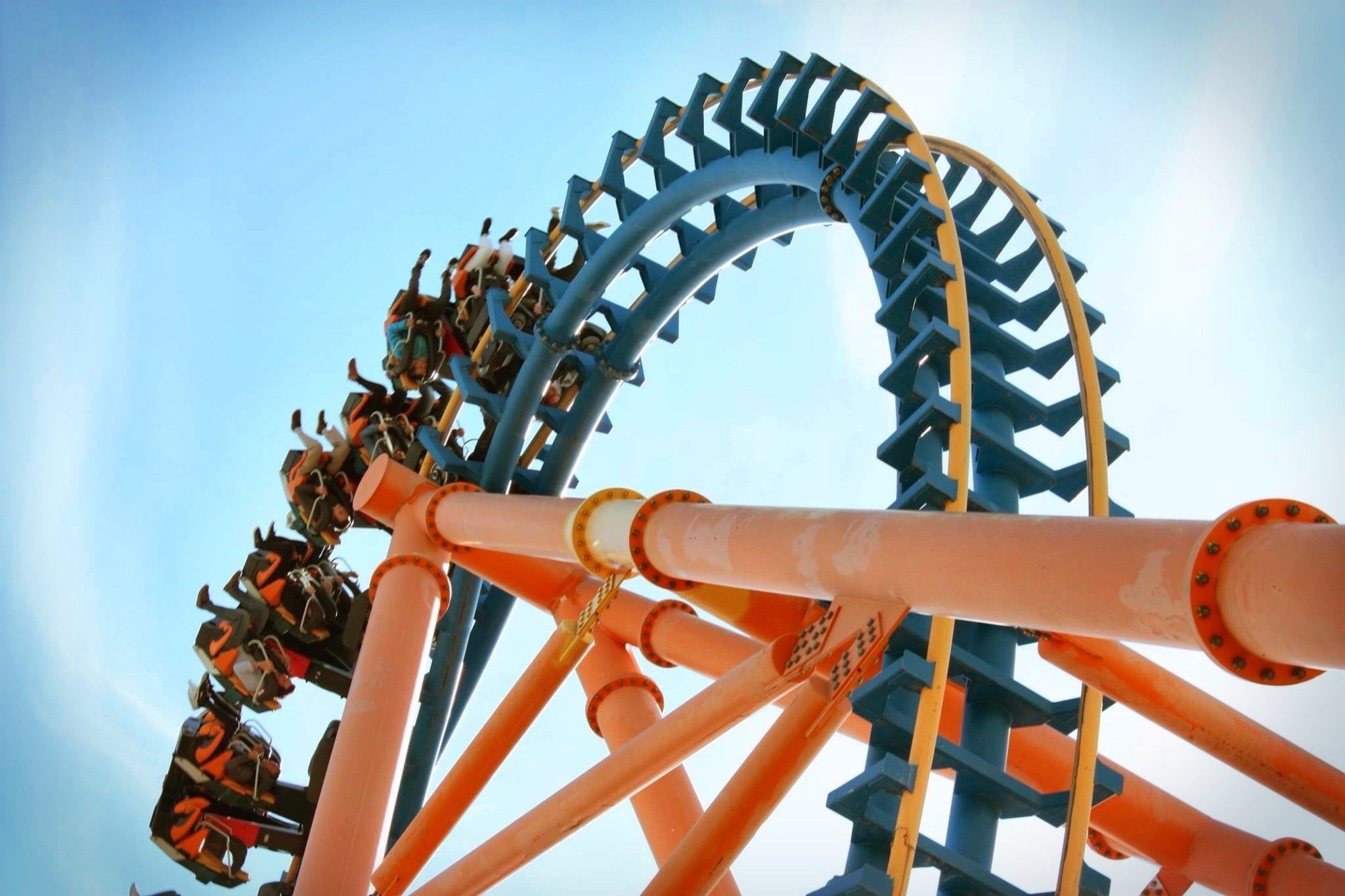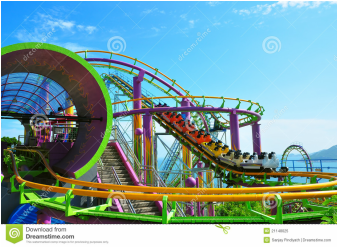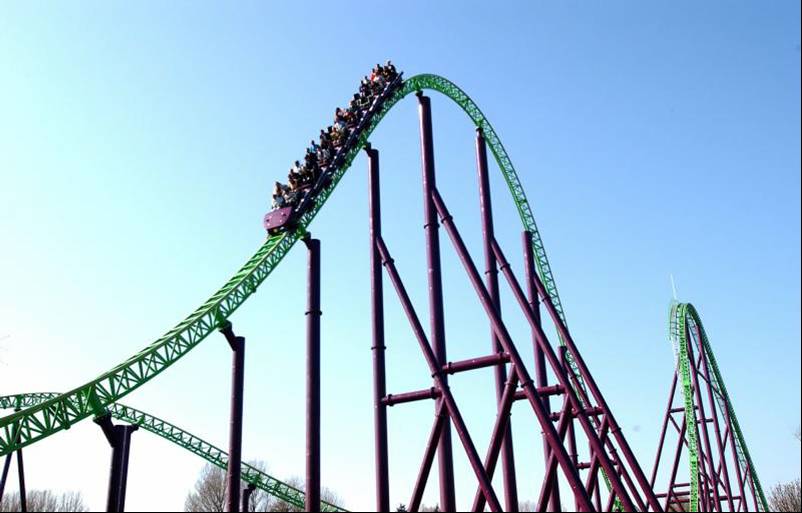Roller coasters are a staple of amusement parks, thrilling riders with their steep drops, sharp turns, and high speeds. But behind the fun and excitement of a roller coaster ride is a complex physics system that allows these rides to operate safely and efficiently.
The most fundamental principle at work in a roller coaster is the law of conservation of energy, which states that energy cannot be created or destroyed, only converted from one form to another. Roller coasters use this principle by converting potential energy, or energy stored in an object due to its position, into kinetic energy, or energy of motion.
At the beginning of a roller coaster ride, the train is lifted to the top of a hill or lift hill using a chain or cable. As the train is lifted, it gains potential energy due to its position at a higher elevation. At the top of the lift hill, the train is released and begins its descent, converting its potential energy into kinetic energy as it gains speed.
As the train travels along the track, it experiences various types of forces, including gravitational force, normal force, and friction. The gravitational force acting on the train is the force of the earth's gravity pulling it downward. The normal force is the force exerted by the track on the train, which acts perpendicular to the track and helps to keep the train on its intended path. Friction is the force that opposes the motion of the train and is caused by the roughness of the track and the air resistance the train encounters as it moves through the air.
The design of the track plays a crucial role in the physics of a roller coaster. The shape and height of the hills, the angles of the turns, and the length of the straightaways all affect the speed and motion of the train. Engineers use various mathematical equations and computer simulations to design tracks that provide an exciting and safe ride for passengers.
In addition to the physics of the track and train, roller coasters also rely on various mechanical systems to operate. These systems include the braking system, which slows down or stops the train, and the propulsion system, which powers the train along the track. Some roller coasters also use special effects, such as water spray or light displays, to enhance the overall experience of the ride.
Overall, the physics of roller coasters is a fascinating and complex field that plays a crucial role in the design and operation of these popular amusement park attractions. From the conversion of potential energy to kinetic energy to the various forces acting on the train, roller coasters offer a thrilling and educational experience for riders of all ages.






